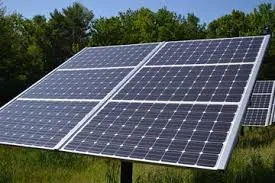Advancements in Energy Storage Technologies for Sustainable Power Management Solutions
Exploring Energy Storage Systems The Key to a Sustainable Future
In the pursuit of a sustainable energy future, energy storage systems (ESS) have emerged as a crucial technology. These systems play an essential role in balancing supply and demand, integrating renewable energy sources, and enhancing the resilience of the energy grid. As we shift towards a more electrified world, understanding the importance and functionality of energy storage systems becomes paramount.
Energy storage refers to the methods used to store energy for later use. This can be achieved through various technologies, including batteries, pumped hydro storage, compressed air energy storage (CAES), and thermal storage systems. Each technology offers unique advantages and is suited for different applications.
Among these technologies, lithium-ion batteries have gained significant popularity due to their high energy density, efficiency, and decreasing costs. They are widely used in electric vehicles (EVs), portable electronics, and stationary energy storage applications. The ability of lithium-ion batteries to quickly charge and discharge makes them particularly useful for balancing peak demand and stabilizing the grid.
Pumped hydro storage is another established technology that has been utilized for decades. It involves pumping water to a higher elevation during periods of low demand and releasing it through turbines to generate electricity when demand is high. This method is highly efficient and can provide substantial storage capacity, making it an integral part of the energy infrastructure in many regions.
Compressed air energy storage (CAES) is a less common yet promising technology. In CAES systems, air is compressed and stored in underground caverns or containers. When electricity is needed, the compressed air is heated and expanded through turbines to generate power. Although CAES has a lower efficiency compared to battery systems, its ability to store large amounts of energy makes it an attractive option for grid-scale applications.
energy storage system

Thermal energy storage systems are also gaining traction, especially in conjunction with concentrated solar power (CSP) plants. These systems store excess heat generated during the day and release it at night or during cloudy periods, ensuring a continuous supply of energy. This technology not only aids in meeting energy demands but also enhances the overall efficiency of renewable energy generation.
The integration of energy storage systems into the energy grid enables greater use of renewable energy sources such as solar and wind
. By storing excess energy produced during peak generation times, ESS can supply electricity during periods of low generation, thereby reducing reliance on fossil fuels. This capability is essential for mitigating the intermittency issues inherent in renewable energy production.Moreover, energy storage systems can enhance grid resilience. During natural disasters or power outages, ESS provide backup power, ensuring that critical infrastructure remains operational. This reliability is increasingly important as extreme weather events become more frequent due to climate change.
As we move towards a cleaner and more efficient energy landscape, the development and deployment of energy storage systems will be vital. Governments, businesses, and researchers are investing heavily in advancing storage technologies, reducing costs, and improving performance. With continued innovation, energy storage systems have the potential to transform our energy systems, making them more sustainable, resilient, and capable of supporting a low-carbon future.
In conclusion, energy storage systems are the backbone of modern energy infrastructures. Their ability to integrate renewable energy, enhance grid reliability, and support sustainable practices positions them as a key component in addressing the challenges of climate change and energy security. As technology progresses, the future of energy storage looks promising, paving the way for a more sustainable and resilient energy landscape.
-
Unlocking Energy Freedom with the Off Grid Solar InverterNewsJun.06,2025
-
Unlock More Solar Power with a High-Efficiency Bifacial Solar PanelNewsJun.06,2025
-
Power Your Future with High-Efficiency Monocrystalline Solar PanelsNewsJun.06,2025
-
Next-Gen Solar Power Starts with Micro Solar InvertersNewsJun.06,2025
-
Harnessing Peak Efficiency with the On Grid Solar InverterNewsJun.06,2025
-
Discover Unmatched Efficiency with the Latest String Solar InverterNewsJun.06,2025







